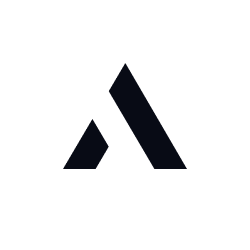Snowflake harnesses the power of the cloud to help thousands of organizations explore, share, and unlock the actual value of their data. Whether your company has ten employees or 10,000, if you’re one of Snowflake’s 4,500 customers and counting, you’re either thrilled or overwhelmed by the cloud data warehouse’s combination of out-of-the-box functionality and powerful, flexible features.
Wherever you are in your journey, though, it’s never too early or too late to think about how you’re handling Snowflake data governance and security for sensitive data like PII/PHI/PCI.
When you look at the enterprise-level security and governance capabilities Snowflake offers natively within the platform, you may wonder why you need more (see the Bonus question for this answer). And the options for Snowflake Data Governance offered by partners may sound similar, making it a challenge to know what the differences are and what you need.
With that in mind, we’ve put together the critical questions you should ask when evaluating Snowflake Data Governance options. Going through this list should reveal the best next step for your company.

1. Is the Snowflake data governance solution easy to set up and maintain? Does it use Proxy, Fake SaaS or Real SaaS?
There are several ways vendors can enable their Snowflake data governance solutions. One approach is to utilize a proxy. While proxy solutions have some advantages, they come with serious issues that make them less than ideal for cloud-based Snowflake:
- Extra effort is required to make all applications go through the proxy, adding time, complexity, and costs to your implementation.
- Security holes are created when applications and users can bypass the proxy to get full access to data, increasing risk and surfacing compliance issues
- Platform changes may break the proxy without warning, adding unnecessary downtime and delays
- On-premises proxies require you to deploy, maintain, and scale more infrastructure than you would with a pure-SaaS Cloud-native solution
SaaS is a better option for Snowflake data governance, but some providers calling themselves “SaaS” are better defined as “Managed Services.” In these “Fake SaaS” solutions, vendors spin up, support and update an individual version of the software just for you. This makes it more expensive to run and maintain than true SaaS, costing you more. They can also require long maintenance windows that make the service unavailable during updates.
A proper multi-tenant SaaS-based data governance solution built for the cloud – like ALTR’s – is easier to start and maintain with Snowflake. There’s no hardware deployment or maintenance downtime required, no hardware sitting between your users and the data, no risk of a platform change breaking your integration, and no difficulty scaling your Snowflake usage. Because it’s natively integrated, there are no privacy issues or security holes. A real SaaS-based solution will also have the credentials to back it up: PCI DSS Level 1, SOC 2 Type II certification, and support for HIPAA compliance.

2. Is the Snowflake data governance solution easy to use? Does it require code to implement and manage?
Snowflake provides the foundation with native data governance features like sensitive data discovery and classification, access control and history, masking, and more with every release. But for users to take advantage of these Snowflake data governance capabilities on their own, they must be able to write SQL. That can make the features difficult, time-consuming, and costly to implement and manage at scale because data governance administration is limited to DBAs and other developers who can code.
However, the groundwork Snowflake provides allows partners to create solutions that leverage that built-in functionality but deliver an easier-to-use experience. ALTR’s solution provides native cloud integration and a user interface that doesn’t require code to get started or manage. This means your Data Governance teams or even line of business data or analytics users can take over the management of governance policies on Snowflake, freeing DBAs to focus on managing data streams and enabling data-driven insights.

3. It is a complete Snowflake data governance solution? Does it secure all of your data and reduce your risk?
This is crucial. You may look for a Snowflake Data Governance solution in response to privacy regulations, but you’ll never be truly compliant without a data security. And most “data governance” options don’t include data protection. While Snowflake offers many enterprise-level security features, there’s no defense against credentialed or privileged access threats. Once someone gets access with compromised credentials, there’s no mechanism for slowing or stopping data consumption.
Some software vendors calling themselves “data governance” only provide data discovery and classification – a data card catalog – without access control. And some other vendors require the data you want to protect to be copied into a new Snowflake database managed by the solution, leaving the raw data in the original database—ungoverned and unprotected. You may never know if anyone has accessed that data, potentially violating privacy regulations that require you to understand and document who has accessed data, even if nothing leaks outside the company.
For complete Snowflake Data Governance, you must not only be able to find and classify your data, but see data access, utilize consumption thresholds to detect anomalies and alert on them, respond to threats with real-time blocking, and tokenize critical data at rest. ALTR combines all these features into a single data governance and security platform that allows you to protect data appropriately based on data governance policies, ensure all your data is secure, and minimize your risk of data loss or theft.

4. Is the data governance solution affordable and flexible? Can you start with only what you need?
Most solutions cost $100k to $250k per year to start! These large, legacy on-premises platforms were not built for today’s scalable cloud environment. They require considerable time, resources, and money to even get started, which is an odd fit for Snowflake’s cloud-based platform, where Snowflake On-Demand gives you usage-based, per-second pricing with a month-to-month contract.
ALTR’s pricing starts at “free.” Our Free plan gives you the power to understand how your data is used, add controls around access, and limit your data risk at no cost. Our Enterprise and Enterprise Plus plans are available if you need more advanced governance controls, integration with SOAR or SIEM platforms, or increased data protection and dedicated support.
ALTR’s tiered pricing means there’s no large up-front commitment—you can start Snowflake data governance for free and expand if or when your needs change. Or stay on our free plan forever.

Bonus Question: Can’t I just build a solution myself?
While a data admin can write Snowflake masking policy using SQL to leverage Snowflake’s native features, what happens next? That is a one-time point fix but what about the long term and wide scale? Can others read and work with it? Do you have a QA team to eliminate errors? Can you ensure it scales correctly and can run quickly across thousands of databases? Do you have the time to integrate it with Okta or Matillion or Splunk? Do you have a roadmap that ensures it stays up to date with new private-preview Snowflake features, keeping up with your changing data and regulatory landscape, and addressing new user service needs? Basically, do you want your data team to be a software development team? You could hire 30 engineers and spend millions of dollars to build enterprise-ready Snowflake data governance software you can trust with the risky connection between users and data, but why should you when there are already cost-effective solutions from companies in the market focused on just this?
Conclusion
Companies flocking to the cloud data party, and Snowflake in particular, are faced with a dizzying array of options for Snowflake Data Governance. However similar the solutions may seem, with a little digging fundamental differences become apparent. ALTR’s solution stands out for its accessible, SaaS-based, no-code setup and management and complete Snowflake data governance and security feature set. And with its reasonable user- and data-based costs, ALTR becomes the obvious next step for Snowflake users to govern and protect their sensitive data.


